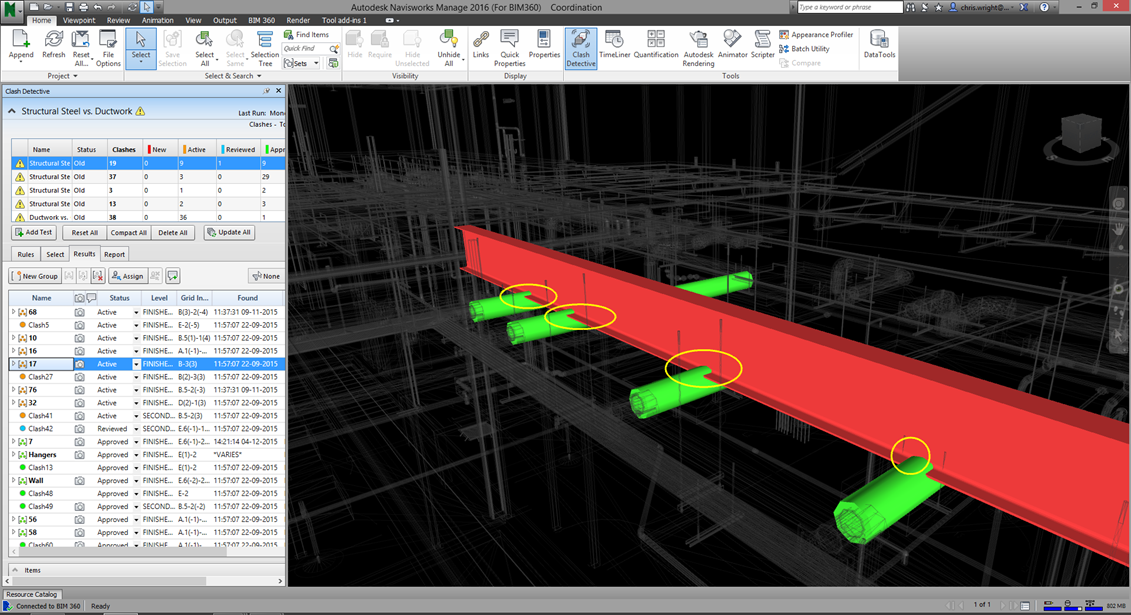Where Can Building Information Modelling Come Into Play in AEC Industry?
Virtual Construction Modelling

We have been hearing and reading about Depth of Building information modeling aka BIM for a decade. This technology has become eminent in the last 3 years owing to the innumerable features and advantages it
offers. Virtual Construction Modelling is a process of developing a 3D geometry which comprises building data, site details, dimensioning that helps in validating the design, construction and operability of any infrastructure before the construction process begins.
There is multiple software that helps in developing BIM Models across Architectural, Structural and MEPF discipline. These BIM 3D models showcase any building infrastructure in the most detailed manner with site information, quantities of materials required during construction, general dimensions etc. that are very important. This building data helps in interpreting the information that can be utilized in making changes in the design or overall improvising the construction process based on the model development. The first question that comes to mind, is how did “constructability review” happen in the absence of BIM Modelling or the virtual construction technology? The answer is that the “Constructability review” did happen, but it happened during construction and most of the changes had to be done while the construction was happening. The best part about availing BIM Services is that one gets to know about the changes and other requirements before the construction begins. Hence Building information modelling falls under the category of “Pre-Construction Services”.
A completed BIM Model comprises 6 to 7 interdisciplinary models such as Architectural, Structural, HVAC, Electrical, Plumbing, and Firefighting models which are developed from CAD Drafting Services. All the details are incorporated in separate models before they are coordinated into one single model for a thorough interference check, coordination, and constructability review meeting. Why did BIM gain precedence over all other construction processes? Let us talk about the benefits of BIM, but before discussing the benefit let us talk about the application of BIM Modelling.
Where can virtual construction model come into play in AEC Industry? BIM can actually be a very good tool to generate the following
- Architectural Construction Drawings: Architectural BIM Models can be utilized to extract detailed and building compliant drawings that can be used for construction purposes. Once can opt to validate designs, make changes in the project delivery models using virtual construction Modelling. It becomes easier to develop 3d Models, set us 2D sheets, dimension and annotate and ultimately save them within the model.
- Budgeting and Estimation (5D): Project phasing is a widely used utility through BIM Modelling. Once of the most important part of project management and phasing is Budgeting and estimation. One can extract the costing, budget sheets, material, labour and overall construction cost of a detailed BIM Model.
- Sequencing and Phasing (4D): This is one of the most attractive and interesting concepts within the BIM Model. One can easily feed in the construction sequencing within the 3D Model, extract the construction schedule, materials applied during each level of construction, the complete timeline from start to finish of the infrastructure etc.
- Coordinated BIM Model: This process helps in the assimilation of multiple models of different disciplines. While assimilation BIM Engineers check for collisions and clashes, interferences within specific services or domains along with any design changes that need to be made in the model. A lot of clashes are identified during the BIM Co-ordination process which leads to re-routing of ducts, change in ceiling heights or slabs, etc. BIM coordination model is the crux of virtual construction technology. No BIM process is complete without co-ordination Modelling.
- 3D Rendering: One of the most prominent areas where BIM Modelling is used is Architectural Visualization. These data-rich, detailed Virtual Construction Models can be used to create photorealistic and magnificent renderings that can be used for marketing and presentation purposes. Apart from 3D rendering services, we can also develop animation and walkthroughs, 3D fly-through etc. too from the BIM Models.
- BIM for renovation: This is the latest feather in the cap. BIM can be used for the renovation of old buildings, historical structures, government buildings, railway stations, Airports etc. Scan to BIM Modelling is a technology that transforms point cloud images into 3D BIM Models. These surveys are conducted using a laser scanner that captures the building data in form of point clouds which is later developed into a 3d model for multiple purposes. There are different formats in which point clouds can be displayed, registering them before transforming them into BIM is important.
- Fabrication or Shop Drawings: Detailed and layered MEP and structural shop drawings can be developed from a 3D BIM Model for construction and installation purposes. These drawings are extracted from a LOD 400 model and used for on-site construction. Even during construction or installation if we find any drawings that are not giving perfect results owing to design issues or interferences, we can change the components on site and later update the As-built.
There many such applications where BIM can be used, but it is not. Facility management, project planning, etc. are some areas that are bereft of this path-breaking invention.
There are many construction companies globally that still follow the traditional method of construction by working on 2D formats. Though Drafting is an inevitable part of the construction industry, it has not been able to solve many glitches in construction which BIM Modelling has effectively resolved. Once the Construction Companies, Architectural Firms, Engineering Consultants and General Contractors understand the applicability of BIM technology, it will become easier to implement it. Hence it has become inevitable for such companies to hire companies who are experts in providing BIM consultation, BIM Implementation and overall execution of Building Information Modelling Projects.
Construction industry should transit from CAD & BIM Services spanning next few years. The applicability of BIM is still within a negligible range. One of the reasons for this may be resistance to change, fear of investment in a newer technology, further investment in hiring & training cost, software cost etc. There is a very good solution available to combat these issues. It is easier to outsource your BIM requirements than having a team in-house. Outsourcing BIM projects will scrap your overhead costs by 50%, will help you focus on your actual business acumen and assist you to bid more projects as you don’t have to worry about deploying additional resources to complete any project.
We will talk about the benefits in the next concluding article. Also, we will throw some light on how BIM implementation cost can be reduced using an outsourcing model of project execution.
Photo: https://www.nabholz.com












